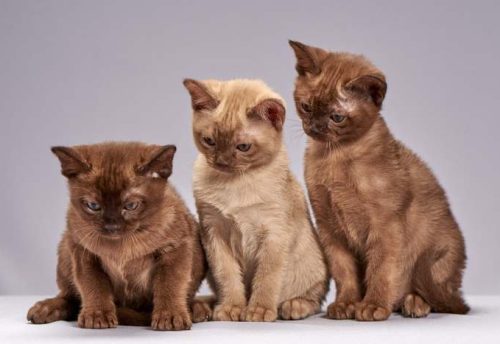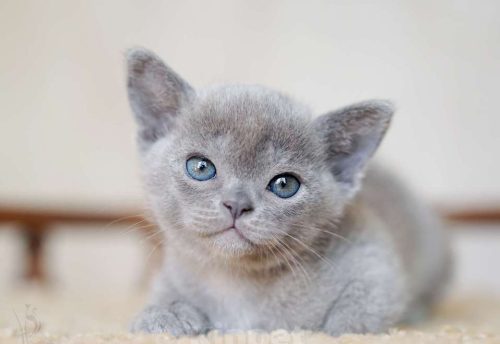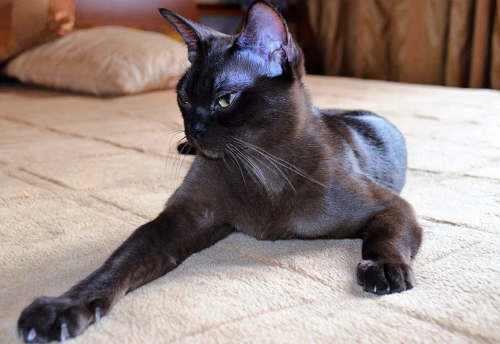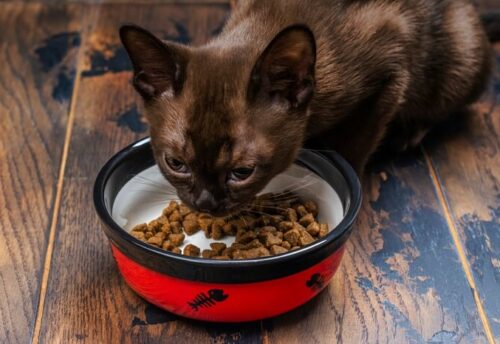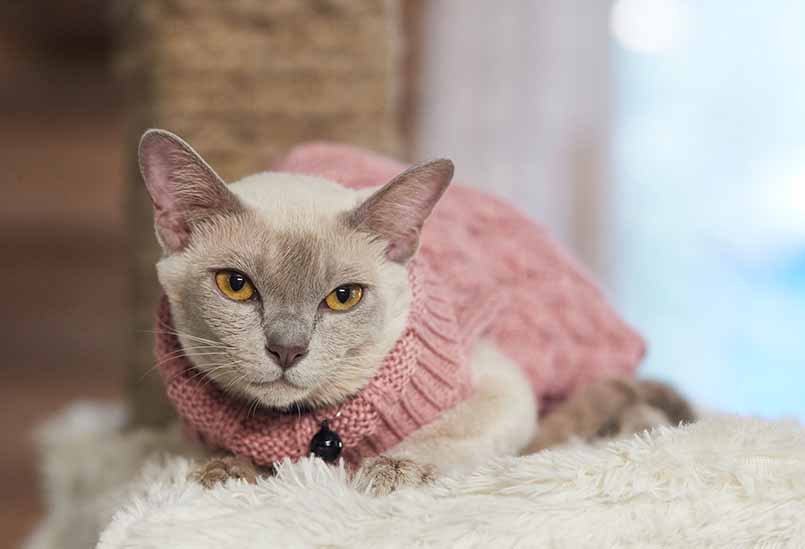
Burmese Cat (Burma)
Looking for a friend? Consider getting a Burmese cat. This beautiful creature will win your heart, even if you prefer dogs, thanks to its open, independent nature, energy, remarkable intelligence, and wisdom.
Origin History
The breed began to be developed centuries ago in Southeast Asia, in Burma (now Myanmar). The inhabitants of the country valued these animals, allowing them to live in temples where monks provided good care. According to legend, the Burmese cat accompanied the soul of a deceased owner to the afterlife, ensuring peace. Another belief held that the pet brought happiness and wealth to its owners. This breed was predominantly owned by aristocrats.
When the breed arrived in Europe at the end of the 19th century, it was called the “black Siamese,” but by 1934 the first standard was established. Since then, members of this family have confidently made their way around the world on their soft paws, winning people’s hearts.
The “Via Emilia” Burmese cattery actively participates in breeding Burmese cats and sells them in the Netherlands and worldwide.
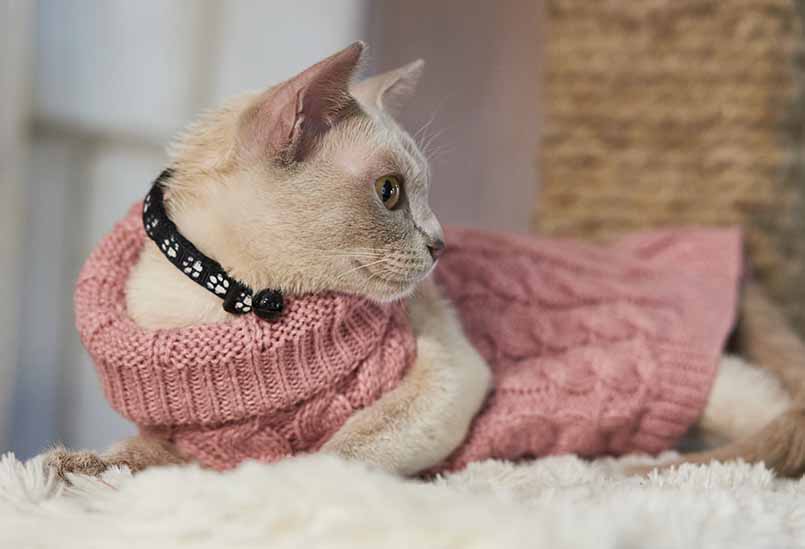
Appearance
One look at a photo of a Burmese cat is enough to become a lifelong fan. The embodiment of elegance and grace, these cats are surprisingly heavy despite their refined appearance.
The average weight of males is 4.5 kg, while females average 3 kg. Some individuals can reach up to 9 kg.
These short-haired, medium-sized animals have appearances that vary according to their standard:
-
- American Burmese cats have round faces, not too long, rounded ears, and widely set eyes that give them an open and friendly expression.
-
- European Burmese cats have narrow, wedge-shaped faces and long, pointed ears. Their gaze is intelligent and slightly “cunning.” Their bodies are slimmer compared to the stockier “American” type.
Examples of the Burmese breed are shown in photographs.
Character of the Burmese Cat
People who have had the pleasure of owning a Burmese cat often say it has the appearance of a cat but the character of a dog. Energetic and active into old age, it will never let you get bored. Devotion to the owner is evident in its eyes and gestures. The cat loves spending time with its “parent,” participating in their life and reciprocating love and care.
Physical contact is important for a Burmese cat. Don’t be surprised if it follows you around, climbs under the covers, and purrs gently while maintaining eye contact. This loyalty can be a great source of comfort even in the toughest times.
Interestingly, the character of the Burmese cat can vary depending on its gender. Male cats tend to bond sincerely with all household members. Female cats usually choose a favorite, giving that person special attention and trust.
This difference is particularly noticeable in homes with both male and female cats. Males become “one of the guys,” trying to relieve the family’s worries by offering affection and tenderness. Females respond sensitively to the owner’s mood, adjusting their behavior and not imposing their presence.
If you decide to buy a Burmese cat at an affordable price, be prepared to spend time with your pet. These animals cannot tolerate loneliness. If you are often away, consider their emotional well-being. The ideal solution is to get a second cat of the same breed, so they will not be bored when left at home.
Care
Burmese cats do not require special care. It is recommended to brush their coat weekly and wipe it with a piece of chamois to make it shine. Regular ear cleaning and nail trimming are also necessary.
Pay close attention to their diet. Only high-quality products and premium dry foods enriched with vitamins and minerals are suitable. The diet needs to be varied, as these cats can be picky eaters.
Feeding adult cats needs to be controlled. They are prone to obesity, and indulging them with treats can turn them into “balls on four legs.” Avoid giving them food prepared for humans, as it can cause digestive problems.
Lifespan
The average lifespan of a Burmese cat is about 15 years. They are prone to kidney and nervous system diseases.
Proper nutrition, careful care, and attention can extend their life up to 17 years. Some individuals are known to have lived for 24 years.
The cost of a Burmese cat depends on many factors:
-
- Whether you buy from a breeder or not
-
- How well the cat conforms to appearance standards
-
- Its pedigree
Regardless of your choice, the price is affordable.
It is definitely better to buy a cat from a breeder rather than from an unreliable source. We look forward to seeing you at the “Via Emilia” Burmese cattery in Amsterdam with a worldwide kittens delivery. Our kittens are microchipped and litter-trained. Bring a little island of love and beauty into your life amidst the turbulent sea of modern living!



